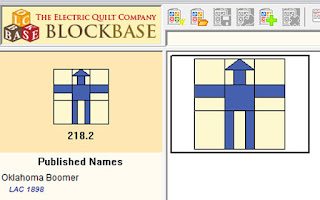"Nick, Nora! Did I pay too much?"
We've been working on a case.
The mystery concerns these similar figurative quilts, sometimes advertised as genuine African-American folk art from the turn of the 20th century.
The questions to be answered were:
Were these forgeries made by one person?
Or is it a pattern sold and then stitched by people who love a pseudo-folk-art look?
I posted the questions and solicited reader's comments in this post:
http://barbarabrackman.blogspot.com/2015/06/folk-art-fakery.html
Do read the comments. Here's a summary.
Do read the comments. Here's a summary.
Many associate quilt detectives responded and I think we've solved the mystery as to why there are so many of these quilts floating around the marketplace.
I doubt anyone actually committed forgery or that any reputable dealer or auction house misrepresented them. What we have is ignorance as to the small quilts' age, source and validity as "authentic" folk art. People unfamiliar with antique quilts are mistaking these crafts items for early 19th century, one-of-a-kind baby quilts.
To summarize the first post and comments:
A Missouri quilt (about 1900) with this figure was photographed for
a 1975 book on antique quilts.
That example is the only antique ever published or documented, although some claim that the design was made all over the South.
A pattern derived from the Missouri quilt
was published by Country House Quilts in Indiana
in the 1980s.
It was published as the "Southern Mammy Quilt" with the copy:
"This is a charming example of folkart ...very light-hearted and naive."
Once I knew the pattern name I could do a web search and find it is still available used, although no longer in print.
And I found a 2001 posting on the Quilt History List by my old friend Cuesta Benberry who was THE authority on black imagery in quilts. Someone on the list had referred to it as the Pea Ridge quilt. The quilt above with a figure derived from the Oklahoma Boomer pattern of about 1900 has a label on it from Pea Ridge Purties, apparently a Tennessee cottage industry that sold small, folky patchwork pieces.
Here's Cuesta's post:
"A quilt design like the Pea Ridge quilt was shown in the book NEW DISCOVERIES
IN AMERICAN QUILTS by Robert Bishop, NY: E.P. Dutton © 1975. pp. 54-55
figs.72, 72a. Bishop dated the unnamed quilt c.1900 from southern Missouri.
Years ago, back in the 1960s, the pattern was published by Opal Phillips in
her little mimeographed monthly quilt magazine entitled Quilter's Swap Shop
Monthly, Oklahoma City, OK. She called the pattern "Black Boy."
Fairly recent commercial paper patterns of this design have been published.
I recall buying one but not exact date (perhaps 1980s?). It is called
"Southern Mammy Quilt" and was published by Country House Quilts,
Zionsville, IN and was wall hanging size.
Over the years I have seen many quilts of this design in vendors' booths at
various quilt conferences I attended.
Cuesta Benberry"
I haven't any information on Opal Phillips pattern. If it predates the publication of the 1975 book I bet her figure looks more like the Oklahoma Boomer design than the block in question.
Why are there so many of these quilts in the marketplace? The idea of making a folky quilt that was perceived of as cute seemed quite appealing at the time. The pattern was popular and many quilters followed the pattern instructions to the letter.
Another reason for the abundance seems to be that an importer was contracting with handworkers abroad to stitch these quilts, which were sold through museum gift shops and quilt shops in the 1980s.
So I think we have answered the questions.
There are other questions of course. The big one being:
Is this design tasteless and offensive?
We're just detectives around here. You'll need a cultural arbiter to answer that.
Why are there so many of these quilts in the marketplace? The idea of making a folky quilt that was perceived of as cute seemed quite appealing at the time. The pattern was popular and many quilters followed the pattern instructions to the letter.
Another reason for the abundance seems to be that an importer was contracting with handworkers abroad to stitch these quilts, which were sold through museum gift shops and quilt shops in the 1980s.
So I think we have answered the questions.
There are other questions of course. The big one being:
Is this design tasteless and offensive?
We're just detectives around here. You'll need a cultural arbiter to answer that.







